MAY 23, 2025 : We woke up to grey skies and damp sidewalks—the kind of morning that makes you want to stay curled up under blankets. But not us. This was the day that we’d begin exploring Denmark beyond Copenhagen. We layered up and walked to the Europcar office, not too far from our hotel.
Before picking up the car, we stopped for breakfast at Coffee First, a cozy little café offering what they called a “typical Danish breakfast”—a soft-boiled egg, fresh bread with butter, homemade jam, yogurt, granola, and excellent coffee. Simple and nourishing.
With our newly rented large SUV, we returned to the hotel, checked out, grabbed our bags, and set off into the rain. Before leaving Copenhagen, we still had one more Jewish Heritage site in the city to visit: Mosaisk Vestre Begravelsesplads, the Jewish Western Cemetery, established in 1886 and still in use today.
We drove into Copenhagen’s Western Cemetery and found it is enormous—green and tree-filled and surprisingly beautiful. It is the largest cemetery in Denmark, spanning about 133 acres. We drove in and tried to locate the Jewish section but could only find scattered Jewish graves. A return to the entrance didn’t help—there was a map, but it didn’t show the section we were looking for. Michal went into the administration building, and a kind woman explained that the Jewish cemetery is actually located outside the main gate. In the pouring rain, we finally found it.

As you first enter the Jewish cemetery, a large red-brick chapel stands directly ahead. To the left is a large lawn, and just off to the side is a Monument to Danish Jews who perished in Theresienstadt. Names of the victims appear on the sides of the monument, and what is remarkable, is that there are so few names – the vast majority of the Danish Jews were saved by the Danes.

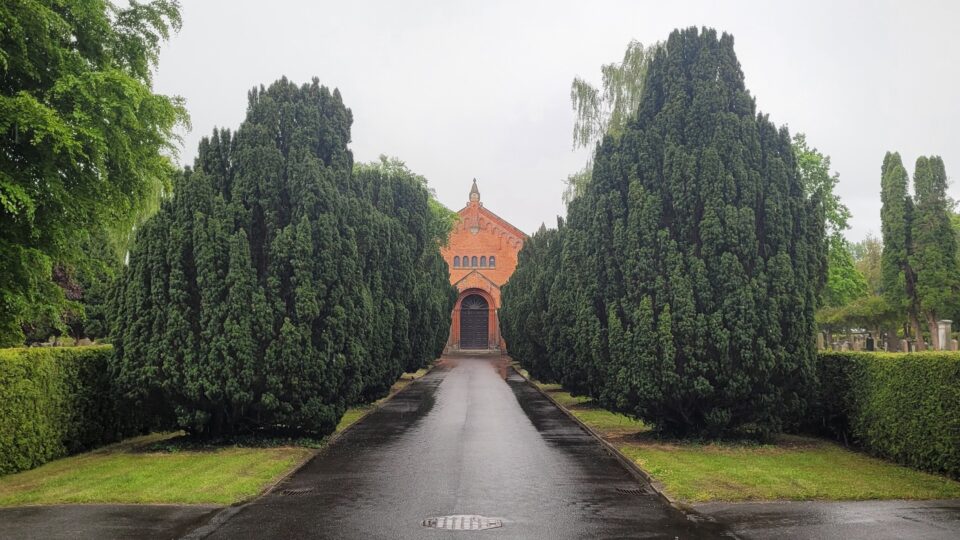

Beyond the lawn on the right and beyond the chapel are the many gravestones. Usually we stay longer to explore, put the pouring rain persuaded us to leave quickly.



From the cemetery, we left the city and began a two-hour drive toward Nakskov. The landscape shifted as we drove—first highways, then country roads. The land turned lush, open and green, dotted with modest homes and wide agricultural fields.
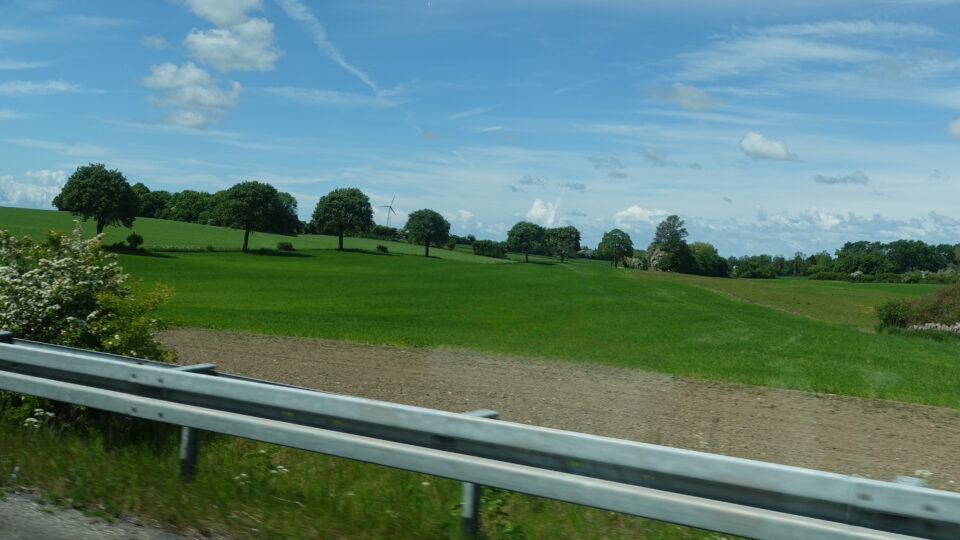

Denmark’s mainland region is a large peninsula extending into the North Sea, called Jutland, which borders Germany at its southern end. In addition, Denmark has over 400 islands. The largest and most populous of the islands is called Zealand, and Copenhagen lies on its eastern shore. To reach Nakskov, our first destination, we drove south through Zealand, then across the small islands of Masnedø and Falster, and continued driving westward until we reach Lolland, the island where Nakskov is located.
Nakskov is a small, historic town of about 12,000 residents. It once had a Jewish community, though little of it remains visible. In the town square, we found a small Friday market. We bought honey from a local beekeeper who told us that this year’s bee population has decreased significantly. He couldn’t say exactly why, only that this region had been particularly hard hit. He sold a range of honey varieties, each based on different regional flowers.
On the side of the square is a statue of highly respected King Christian X of Denmark riding a horse. When Nazi Germany occupied Denmark in April 1940, Christian X remained on the throne and chose not to flee, unlike many other European monarchs. He rode daily on horseback unaccompanied through the streets of Copenhagen subtly defying the German presence. He insisted that all Danish citizens be treated equally, and that Danish Jews were just that—Danes. When the time came and the Danish Jews needed to flee, he helped finance their transport to unoccupied Sweden,
A legend associated with King Christian X is that he wore a yellow Star of David in solidarity with the Jews when the Nazis ordered them to wear it. This story is not true. Danish Jews were never forced to wear the yellow star.


After lunch, we went searching for Nakskov’s Jewish Heritage sites. The Jewish community started here in the early 1800s, part of a wave of small Jewish settlements across rural Denmark. At its peak, it consisted of around 30–50 individuals—mostly merchants and craftsmen. They established two synagogues and a cemetery. Over time, the community dwindled as the younger generations moved to Copenhagen or emigrated abroad, and by the early 20th century, it had effectively disappeared.
Surprisingly, the local tourist office was open. When we inquired about the Jewish history of the town, one of the older staff members knew the location of the Jewish cemetery, but nothing beyond that. From prior research, we knew the addresses of three former congregations but found no indication of them – no sign or plaque – to mark the sites. At two of the addresses, buildings were still standing, but at the third – nothing but an empty lot.


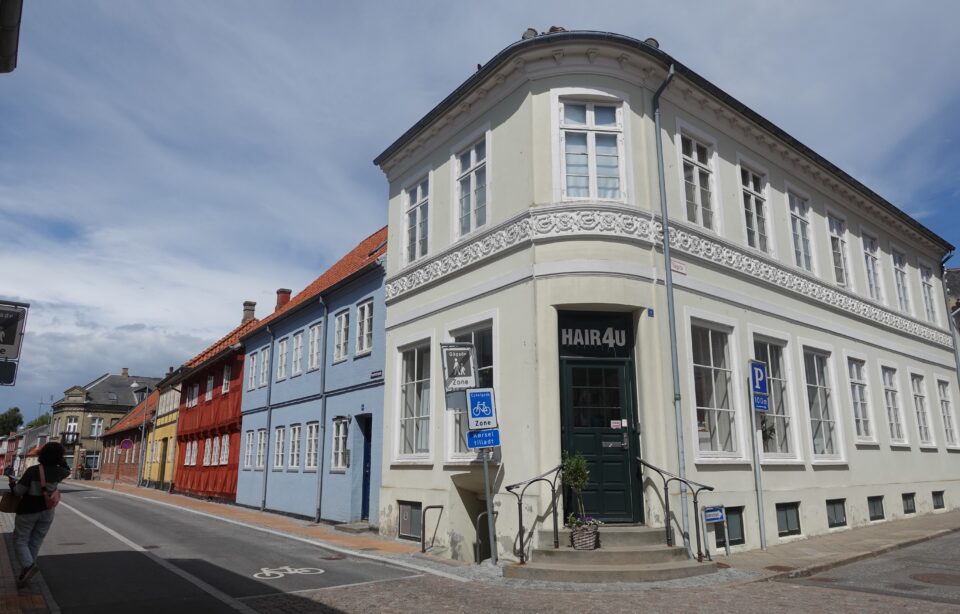
In contrast, the Nakskov Jewish cemetery still exists and seemed well cared for. It is located at Jødevej 54, which translates to “Street of the Jews”. Today the street has small private homes, and on one corner, a grassy plot surrounded by a red brick wall, holds the Jewish cemetery. About 25 gravestones, almost all from the 1800’s, were visible.


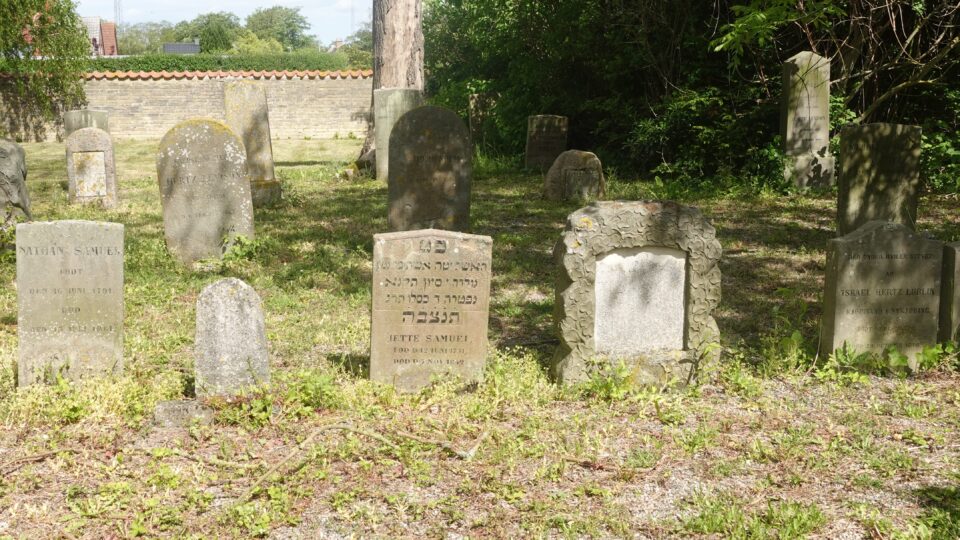
Before leaving Nakskov, we went to a local bakery. One of the favorite winter snacks in Israel is Krembo – a wafer base topped with a marshmallow-like meringue, and coated in chocolate. Krembo, has its roots in 19th-century Denmark, where a similar confection called Flødeboller (cream buns) was invented. These treats, featuring whipped cream on a biscuit base, were later adapted with meringue for a longer shelf life and eventually made their way to Israel.
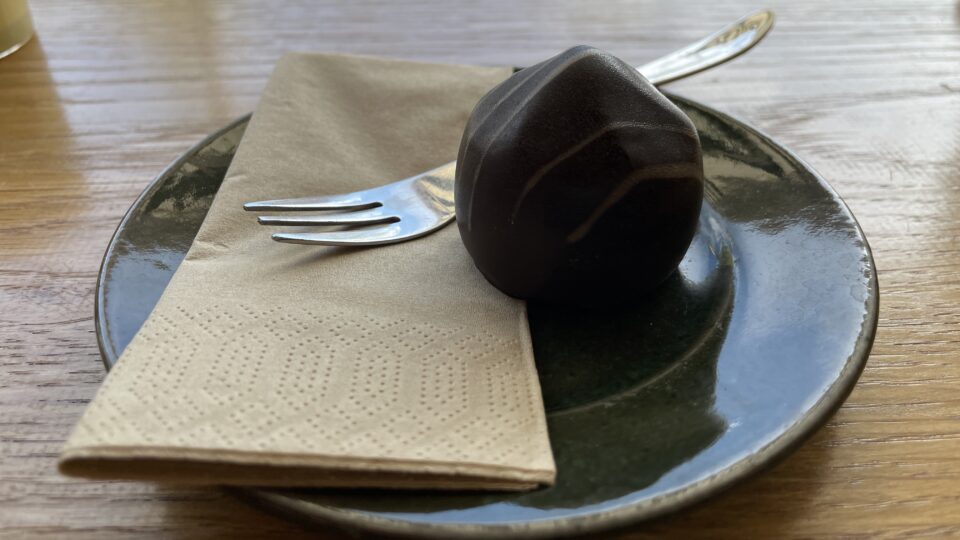
To reach Nakskov, we drove from one island to another over a bridge. To make our way to our AirBnb for the night, we needed to reach the next island by ferry.


After the 45-minute ferry ride, we had a short 20-min drive that crossed two islands (some of the islands are very small), that took us to our apartment in Vindeby, near Svendborg. In general, booking nightly accommodation for this trip did not go easily. Many of the places we visited are not tourist destinations, and now being off-season, we had very limited choices of where to stay.
Our apartment was nice and the evening passed uneventfully. Only when it was time to go to sleep, did we discover that we could not lock the outside door. No matter what we did, it remained open. Michal went next door to ask our host, and she came back and said it’s a known problem for visitors coming from outside of Europe. In some European countries, including Denmark, they use multi-point locking systems where you first need to lift the door handle upward and only then can you use the key to lock the door.
Once the door was locked, we retired peacefully, and went to sleep looking forward to further exploring Denmark tomorrow.
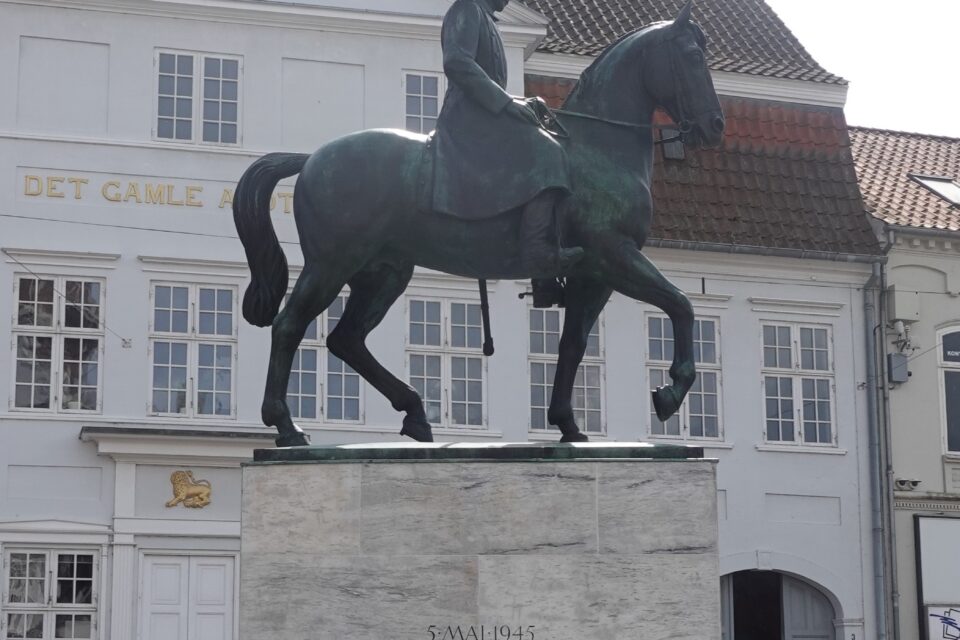
0 comments on “Beyond Copenhagen – Nakskov”Add yours →